Mini herb garden near the house |
On a small plot, a gardener wants to make the most of every square meter. An excellent way to do this is to create a mini herb garden next to the house. This is not only beneficial for diet and health, but also incredibly beautiful. And the amazing aromas will tease even the neighbors!
Unlike leafy greens and salad crops, which are only good when freshly picked, herbs offer many more usage options. Fresh, they perfectly complement the taste of soups, salads, side dishes, and add a spicy note to lemonades and herbal teas. And by autumn, the sprigs can be frozen or dried to extend the feeling of fragrant summer throughout the cold season. By grinding the dried leaves of these herbs, you can mix seasonings (for example, a Provencal blend) or use them separately as a mono-additive to dishes and drinks. There will be fewer vitamins and other beneficial substances in the plant parts, but the aroma and taste will be well preserved. 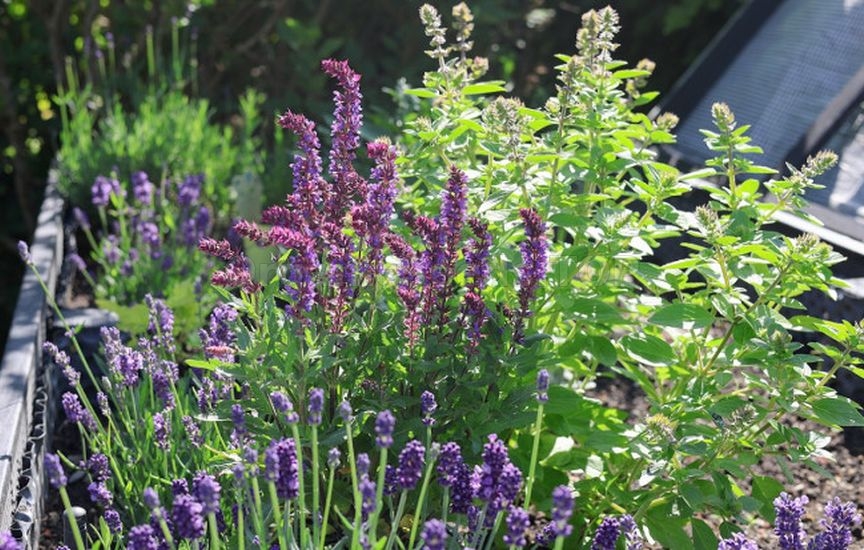 Which crops to choose for the gardenThe list of possible "candidates" for a place in your mini-garden is quite large, and each crop has a huge variety of varieties. Moreover, all these plants differ in size, aroma, shape, and leaf color. Let’s list the most popular aromatic plants that definitely deserve a spot on your plot.
Basil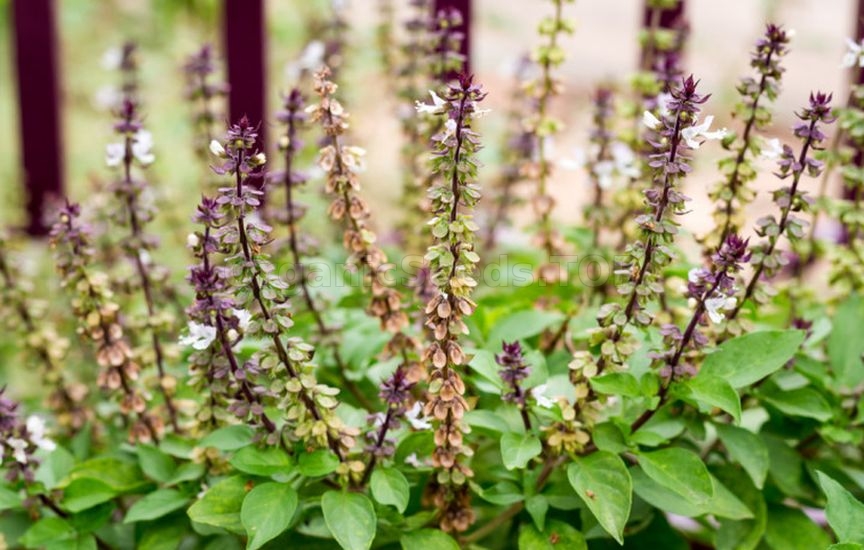 Basil has won the hearts of housewives thanks to its amazing variety of aromas, which are perfectly preserved even after freezing. This "perfume set," including scents from clove to pepper, from lemon to menthol and anise, is so delightful that you want to plant all varieties at once. Despite its southern origin (basil comes from Southeast Asia), it has successfully adapted to the conditions of the temperate zone. The main thing is to properly organize the growing process. The most effective method of growing basil is through seedlings. Young plants are planted in open ground after the end of spring frosts, choosing a sunny spot protected from drafts. Sowing basil directly into open ground is also possible, but for this, it is worth choosing cold-resistant early-ripening varieties. Their main advantage is that the first harvest can be obtained already 1.5–2 months after germination. Lemon balm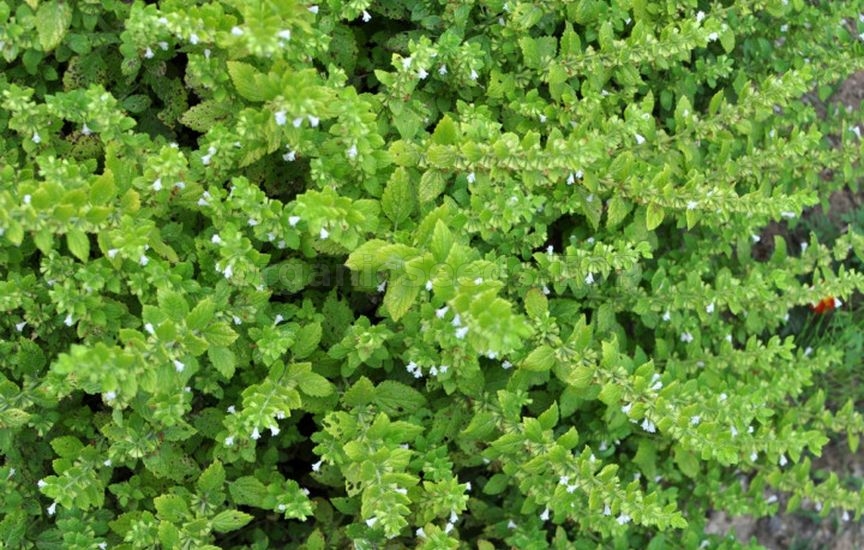 The history of using lemon balm spans more than two thousand years, and to this day the crop remains popular. Young leaves and shoots of lemon balm, collected before flowering begins, are especially valuable. Most often, they are used to make aromatic tea. It is important to remember that to preserve the beneficial properties, the plant is not boiled but brewed with hot water and allowed to infuse. In addition to teas, this herb perfectly complements many dishes — from light salads to hearty soups, from fish to meat delicacies. Its delicate aroma gives a special "sound" even to cheese dishes. Growing lemon balm on a plot is not difficult. It is propagated in two ways: through seedlings or direct sowing into the ground. A favorable period for sowing in open ground is almost the entire spring-summer season, starting in March. Winter sowing in October is also possible, shortly before the onset of frost. Mint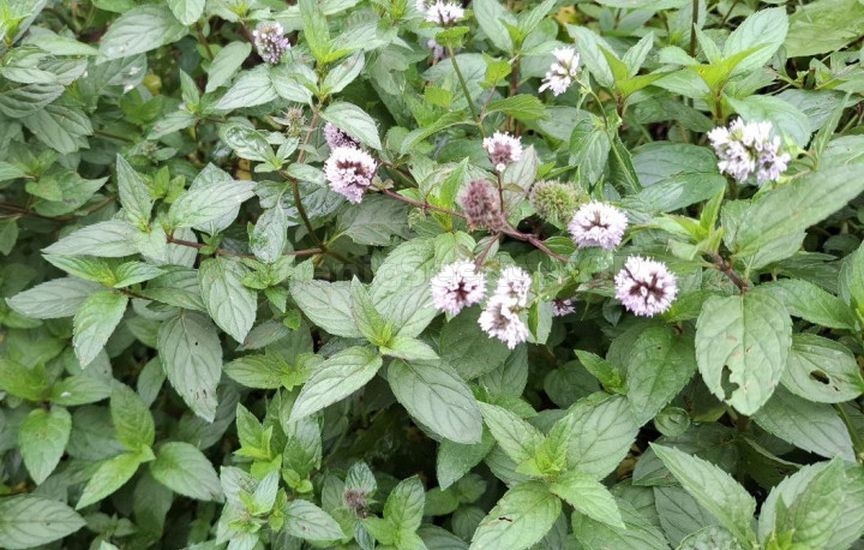 No herb garden is complete without mint, which can amaze with the variety of leaf shades and aromas. The plant can have not only green but also red, burgundy, variegated leaves, and its scent can resemble citrus, ginger, or chocolate. However, it is important to know that this crop spreads quickly, "capturing" territory, so mint growth should be limited. It is best to plant it in a large transport pot and then bury it in the garden bed or flower bed. Or simply surround the plant with slate or border tape, digging it in to a depth of at least 20 cm. Mint can be sown directly into open ground, grown through seedlings, propagated by cuttings or division of the rhizome. It feels great in both sun and shade, and may only "act up" due to water stagnation at the roots. In the temperate zone, mint winters without problems, not needing shelter. Dwarf mint varieties planted in pots and containers continue to grow well all winter on a home windowsill. Oregano (wild marjoram)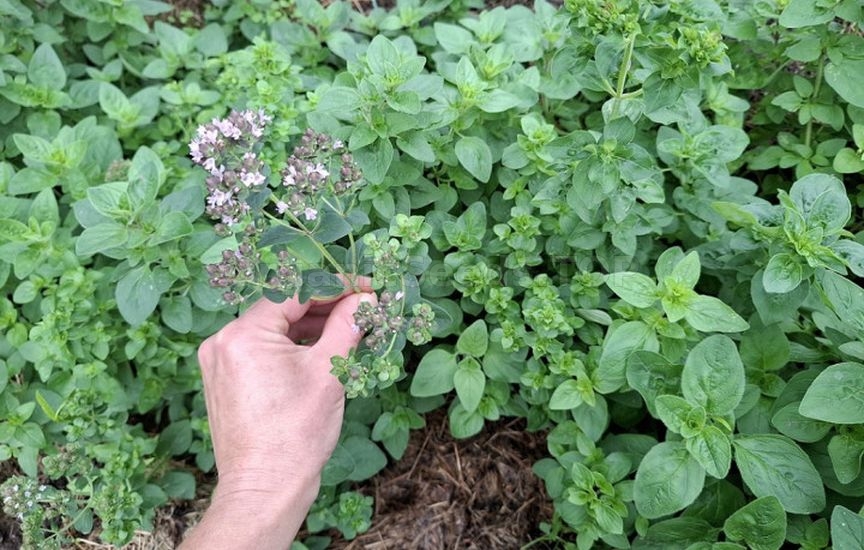 The unique smell of oregano is the "merit" of essential oils, which are abundantly contained in the plant’s leaves. Dried oregano is added to a wide variety of dishes: meat, fish, vegetable, mushroom. The spice perfectly complements the taste of pasta, pizza, omelets, casseroles, salads, and even drinks. Fresh oregano is also used, but much less often. Growing oregano in a backyard garden is not particularly difficult. This perennial plant can be propagated both through seedlings and by direct sowing into the ground. However, the seedling method is considered more reliable, since in protected conditions the tender and fragile seedlings have time to strengthen and take root better in the garden bed. Oregano can grow in one place for more than 5 years, so choosing a site for it requires special attention. The plant is undemanding to soil fertility, but it is important to consider moisture and light levels. Excess moisture or, conversely, severe drought will equally negatively affect growth. It is also worth avoiding shade — in such conditions, the plant will begin to stretch, the foliage will become smaller and less aromatic. Rosemary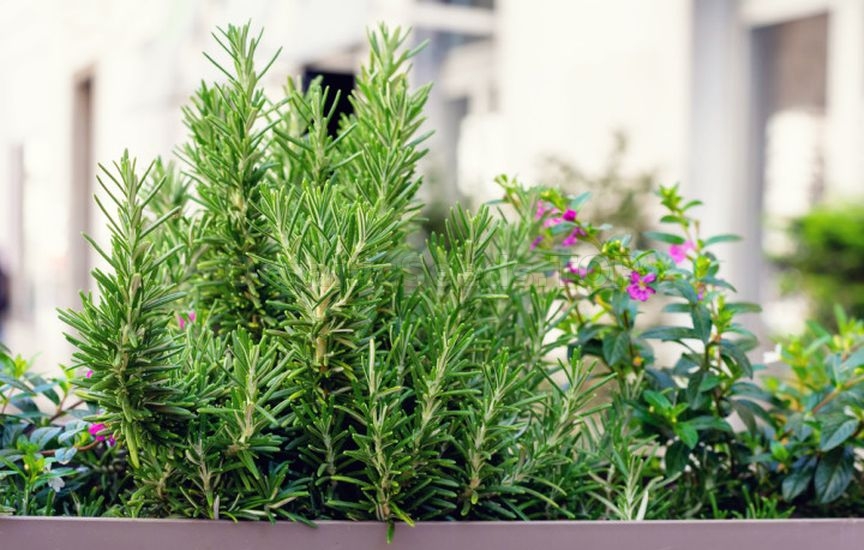 Rosemary is a real find for gardeners passionate about cooking. This amazing spice perfectly retains its pine aroma regardless of whether you use fresh or dried sprigs. Rosemary performs excellently in hot dishes and can be used when baking fish, poultry, or meat. Just place a few sprigs in a dish with chicken, duck, rabbit, or any fish, and after cooking, carefully remove them to get a dish with an unforgettable aroma. Growing rosemary does not require much effort. Rosemary prefers light soils, responds well to regular loosening, and does not tolerate excessive watering. Thyme (chabrets)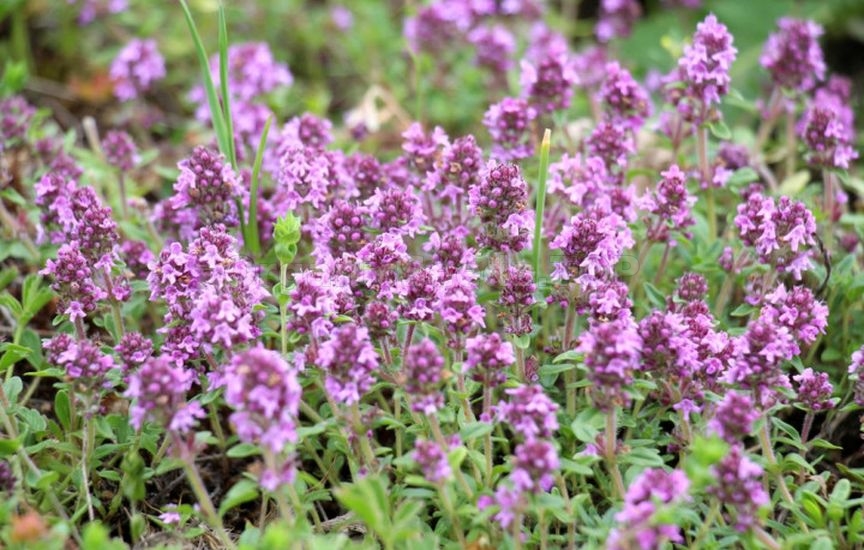 This charming perennial plant from the Lamiaceae family grows from 15 to 35 cm in height depending on the variety. Success in growing thyme largely depends on the correct choice of planting site. The plant needs a well-lit area (only light partial shade is acceptable), loose and fertile soil. Thyme categorically does not tolerate stagnant water, so when planting in areas with high humidity, it is necessary to ensure good drainage. Thyme leaves are a treasure for culinary experts. They are used both fresh and dried, added to a wide variety of dishes and drinks – from meat delicacies to exquisite confectionery and even strong alcoholic infusions. Caraway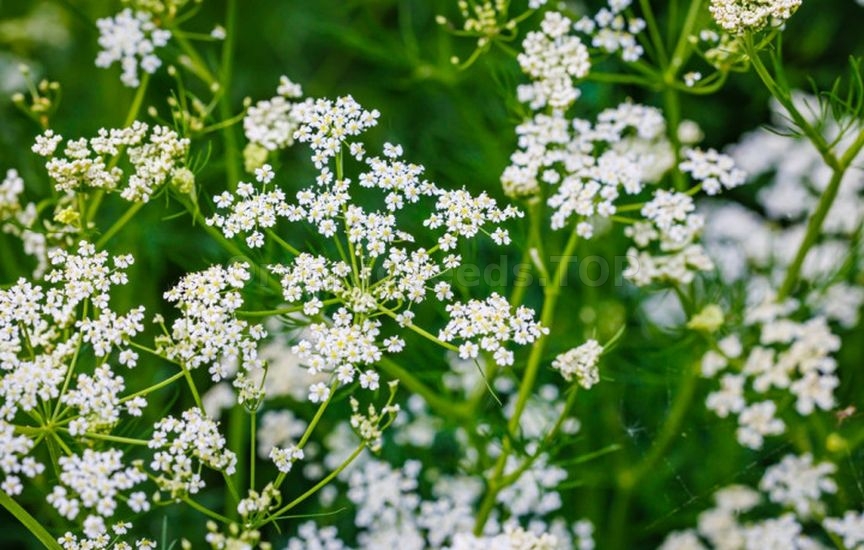 Caraway is a popular spicy crop that has perfectly adapted to the climatic conditions of the temperate zone. This unpretentious biennial plant is highly cold-resistant, which allows it to be sown at different times. Sowing can be done either in early spring, when the soil is sufficiently warmed and dried, or in autumn, in October. Seeds begin to germinate at a temperature of about 10°C. For successful cultivation of caraway, it is necessary to create optimal conditions. The crop prefers fertile, well-loosened soils and does not tolerate excessive moisture, which can lead to root rot. Another important condition is good lighting, since in shady places the development of the plant slows down. In culinary art, caraway seeds are especially valuable, containing 3–7% essential oil, which gives the spice its characteristic aroma. Seeds are used in vegetable canning, baking, confectionery production, as well as in the preparation of meat and fish dishes. Leaves and young shoots are added to soups and salads. Tarragon (estragon)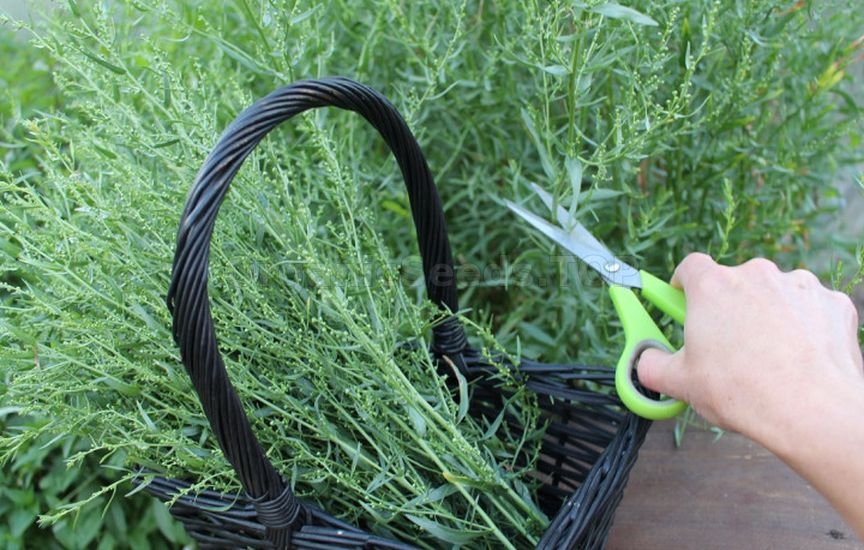 Many gardeners are afraid to plant tarragon, considering it almost a weed due to its tendency to spread quickly and self-seed. However, with proper placement away from the main garden, this plant can become a real find for culinary experiments. Care and control of tarragon, propagation methods and planting times are largely similar to growing mint. The leaves and young shoots of tarragon are especially valuable. Thanks to the high content of essential oils, they have a unique aroma reminiscent of anise and a refined spicy taste without the characteristic bitterness of wormwood. Fresh and dried greens are added to main dishes, side dishes, sauces and marinades. This spicy herb is indispensable in vegetable canning, pickling cucumbers and tomatoes, as well as in preparing fruits for long-term storage. And who doesn’t remember the favorite childhood lemonade! By planting tarragon in the garden, you can make it yourself. Where to plant spicy herbs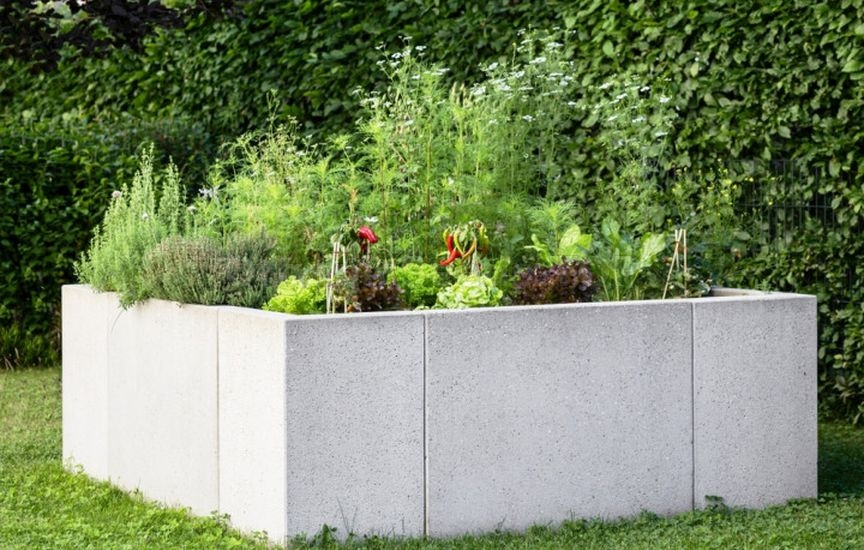 With the help of spicy herbs, you can create a unique corner on the garden plot that will serve not only practical but also decorative functions. Herbs can be planted together, forming a picturesque mini-garden or flower bed exclusively of aromatic plants, or add several spicy crops to a mixed border of familiar perennials. The optimal place for such a flower bed will be a site near the recreation area, front garden or entrance zone. Even if the area for spicy herbs is small, there are many ways to effectively design the space. For example, you can make an original edging with pebbles or create a spiral composition using stone paths. Raised flower beds visually look even more attractive and do not blend into the general landscape. For compact gardens, containers of various sizes are perfect: spacious boxes, decorative pots or even old basins and pieces of furniture that can be creatively incorporated into garden design. 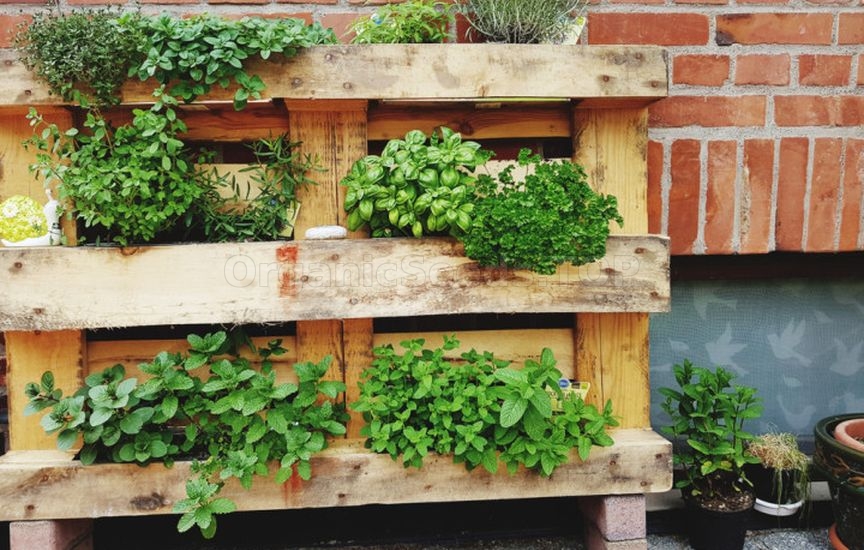 One option for container planting is a phytowall. It can be made from a wooden construction pallet, fixed to any vertical surface and pots with plants placed inside. Or you can buy a ready-made device consisting of several tiers with removable pots and convenient wick irrigation. In such a structure, caring for a mini-garden is easier (no need for weeding), and it takes up no space on the plot at all. Borders along garden paths can also be made from spicy herbs by planting them instead of traditional annuals or ground cover plants. Such a border not only zones and structures the space, but also becomes a source of useful and tasty ingredients for culinary creativity, and thanks to bright aromas, protects flower beds and garden beds from pests. Spicy herbs in a mini-garden or flower bed will help diversify both landscape design and the family diet, and will also turn the plot into a real paradise for pollinating insects. |
|
|
